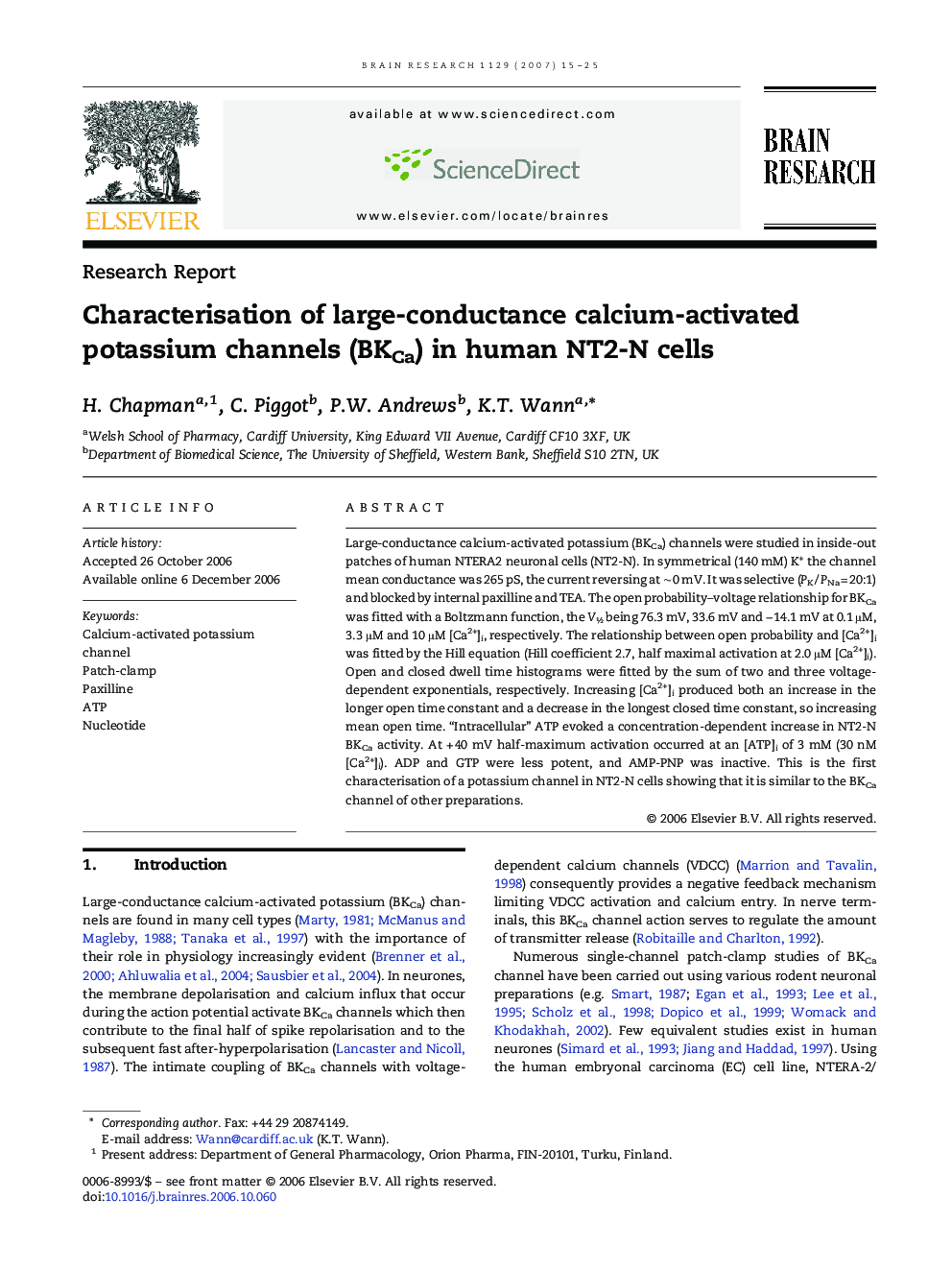| Article ID | Journal | Published Year | Pages | File Type |
|---|---|---|---|---|
| 4331754 | Brain Research | 2007 | 11 Pages |
Abstract
Large-conductance calcium-activated potassium (BKCa) channels were studied in inside-out patches of human NTERA2 neuronal cells (NT2-N). In symmetrical (140 mM) K+ the channel mean conductance was 265 pS, the current reversing at â¼Â 0 mV. It was selective (PK / PNa = 20:1) and blocked by internal paxilline and TEA. The open probability-voltage relationship for BKCa was fitted with a Boltzmann function, the V½ being 76.3 mV, 33.6 mV and â 14.1 mV at 0.1 μM, 3.3 μM and 10 μM [Ca2+]i, respectively. The relationship between open probability and [Ca2+]i was fitted by the Hill equation (Hill coefficient 2.7, half maximal activation at 2.0 μM [Ca2+]i). Open and closed dwell time histograms were fitted by the sum of two and three voltage-dependent exponentials, respectively. Increasing [Ca2+]i produced both an increase in the longer open time constant and a decrease in the longest closed time constant, so increasing mean open time. “Intracellular” ATP evoked a concentration-dependent increase in NT2-N BKCa activity. At + 40 mV half-maximum activation occurred at an [ATP]i of 3 mM (30 nM [Ca2+]i). ADP and GTP were less potent, and AMP-PNP was inactive. This is the first characterisation of a potassium channel in NT2-N cells showing that it is similar to the BKCa channel of other preparations.
Related Topics
Life Sciences
Neuroscience
Neuroscience (General)
Authors
H. Chapman, C. Piggot, P.W. Andrews, K.T. Wann,
